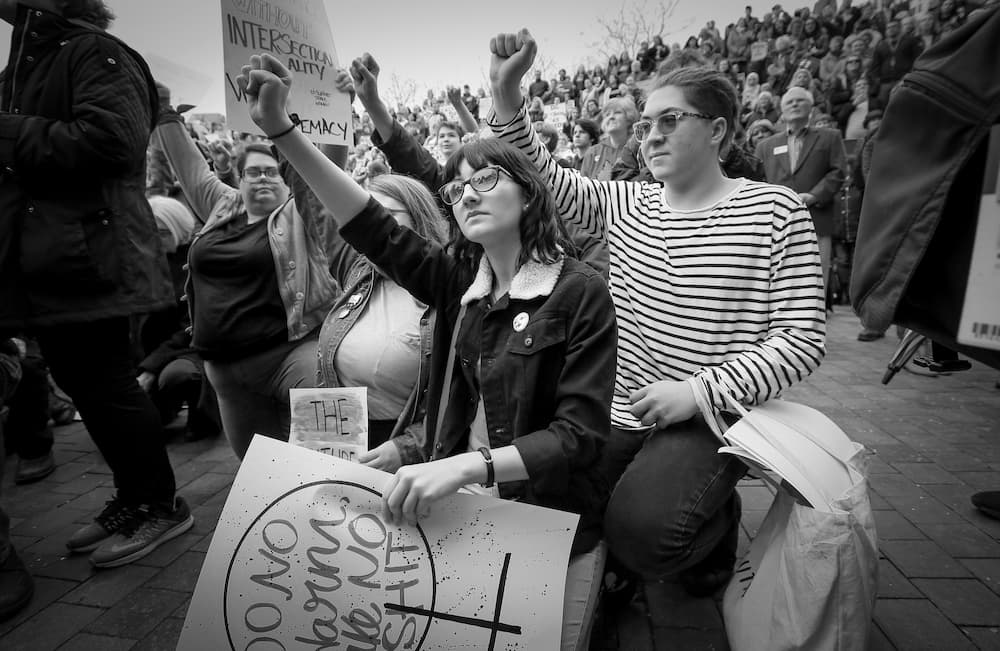Many couples I work with in couples therapy tell me they feel stuck in a painful loop: every time conflict comes up, it escalates quickly, and both partners end up feeling hurt and disconnected. Sometimes the argument isn’t even about the original issue anymore—it becomes about feeling unseen, unheard, or unsafe.
If you’ve experienced this, you know how disheartening getting caught in this spiral can be. Conflict itself isn’t a problem: in fact, all couples disagree and conflict can help you get closer as a couple if it’s handled in a healthy way. However, if arguments reliably trigger fight, flight, or shut-down responses that take you further apart from your partner, it becomes almost impossible to resolve anything.
From a trauma-informed and EFT (Emotionally Focused Therapy) perspective, these patterns of going into fight or flight make sense. Our nervous systems are wired to protect us, especially in moments that feel threatening. But protection often shows up as reactivity and defensiveness which keeps partners caught in cycles that reinforce disconnection.
But we can shift this pattern. With awareness and practice, couples can learn to navigate conflict without turning each other into enemies.
Begin Couples TherapyWhy Conflict Feels So Threatening
When your body senses conflict, it doesn’t sort through the details first, it simply reacts. That’s because conflict activates old survival strategies.
- If you grew up in a home where anger felt explosive or unpredictable, your nervous system may treat any disagreement as dangerous.
- If you experienced neglect or emotional withdrawal, conflict might trigger a fear of abandonment.
- If you were shamed for having needs, conflict may feel like proof that you’re “too much.”
These early experiences leave imprints. So when your partner raises their voice, gets quiet, or turns away, your system might register those cues as danger—even if your partner isn’t trying to harm you.
In EFT, we look at this through the lens of attachment needs. Underneath the fight is often a longing: to feel safe, valued, and connected. But because conflict stirs fear, couples get stuck in protective moves instead of vulnerable sharing.

The Common Cycles Couples Get Stuck In
Though every couple has their own version, most fall into recognizable cycles when conflict arises.
- Pursue–Withdraw Cycle One partner pushes to resolve the issue, often with intensity. The other shuts down or withdraws to avoid escalation. The pursuer feels abandoned, the withdrawer feels attacked, and both end up more entrenched.
- Escalation Cycle Both partners meet conflict with intensity—raising voices, getting defensive, or criticizing. Neither feels heard, so both push harder.
- Avoidance Cycle Both partners fear conflict so much that issues go unspoken. Resentment builds beneath the surface, leading to emotional distance.
None of these cycles mean your relationship is doomed. They simply highlight how our nervous systems can protect us in ways that inadvertently fuel disconnection.
What’s Actually Happening Inside
From a trauma-informed perspective, being triggered during conflict doesn’t mean you’re “too sensitive.” Rather, your body is doing its best to keep you safe. When conflict arises, our nervous systems flip into survival mode:
- Fight: argue, criticize, demand
- Flight: talk fast, over-explain, try to fix everything
- Freeze: shut down, go blank, dissociate
- Fawn: appease, smooth things over, minimize needs
In these activated states, your prefrontal cortex (the part that helps you think clearly) goes offline. That’s why arguments can feel chaotic and overwhelming—you’re no longer in your most resourced self.
Recognizing this can shift the narrative. Instead of seeing your partner as difficult or uncooperative, you can begin to see two nervous systems trying to stay safe.
How Couples Therapy Helps
Couples therapy provides a safe space to slow down these patterns, understand what’s happening underneath, and practice new ways of connecting during conflict.
- In EFT, we map the cycle so both partners can see it as the problem—not each other. This externalizes the pattern and creates room for empathy.
- We help each partner tune into the softer, more vulnerable emotions driving their reactions (fear, longing, shame, sadness). Sharing from this place often transforms how partners respond.
- We build new emotional experiences in session, so partners don’t just talk about safety—they feel safe with one another again.
The goal isn’t to eliminate conflict but to create a foundation where conflict doesn’t threaten the bond.
Get In TouchWhat You Can Try Outside of Therapy
While therapy offers guidance, there are steps you can begin practicing now:
1. Learn to Pause
When you feel triggered, take a moment before responding. Notice what’s happening in your body—racing heart, tight chest, shallow breathing. Pausing interrupts the automatic cycle and gives your nervous system a chance to settle.
2. Name What’s Beneath the Reactivity
Instead of saying, “You never listen,” try: “When I feel unheard, I get scared and it activates an old story that I don’t matter.” Shifting from accusation to vulnerability invites connection.
3. Signal Safety
Use small gestures—soft tone, eye contact, gentle touch—to remind each other you’re on the same team. These cues help calm the nervous system.
4. Set Time-Outs Wisely
Sometimes you need space to regulate. The key is communicating it in a way that reassures your partner: “I’m feeling overwhelmed. I need 20 minutes to calm down, but then I’ll come back so we can finish this.” The commitment to return (and following through with it) maintains trust.
5. Repair, Repair, Repair
All couples get triggered. What matters is how you come back together afterward. Acknowledge the hurt, take ownership of your part, and reaffirm your commitment: “I want us to work through this. You matter to me.”

Shifting from Triggered to Connected
The work of transforming conflict is not about never getting reactive again. It’s about learning to notice the reactivity, slow it down, and reach for each other instead of pushing away.
Over time, as your nervous system experiences safety in conflict, the old patterns loosen. You begin to trust: “even when we disagree, even when things get tense, we can find our way back to one another.”
This is the foundation of secure attachment—not a relationship without struggle, but a relationship where struggle doesn’t feel like the end.
Couples Therapy As A Next Step
If conflict consistently leaves you and your partner triggered, it doesn’t mean you’re incompatible or doomed to repeat the same fights forever. It means your nervous systems are protecting you in ways that once made sense, but no longer serve your relationship.
With support from couples therapy, you can learn to understand these patterns, access the softer emotions beneath the defenses, and create a new way of engaging—one that fosters connection instead of disconnection.
Conflict can become an opportunity to deepen intimacy, not just survive it. The key is learning to see the trigger as a signal—not that your relationship is failing, but that something tender inside needs care.
If you’re ready to break free from painful cycles and build a more secure, resilient connection, consider reaching out for a free consultation. With the right support, conflict doesn’t have to be a battlefield—it can be a bridge back to each other.
Begin Couples Counseling
Emma Kobil is a trauma therapist practicing online with feminist women and thoughtful couples in Colorado and Florida. Her philosophically informed therapeutic approach focuses on helping creative and perfectionist women and couples heal. Learn more about Emma, or schedule an appointment, at mindfulcounselingdenver.com.









